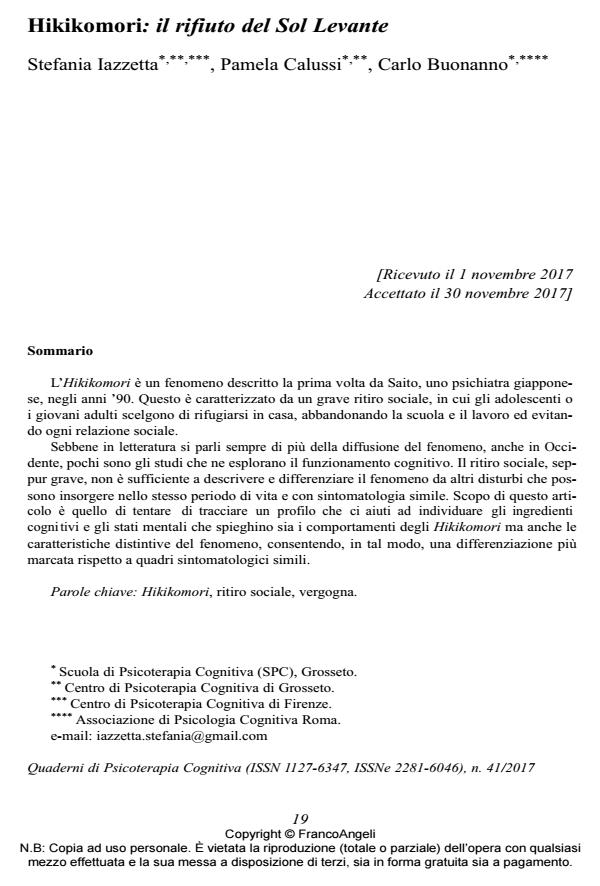Hikikomori: the refusal of the Land of the Rising Sun
Journal title QUADERNI DI PSICOTERAPIA COGNITIVA
Author/s Stefania Iazzetta, Pamela Calussi, Carlo Buonanno
Publishing Year 2017 Issue 2017/41
Language Italian Pages 15 P. 19-33 File size 171 KB
DOI 10.3280/QPC2017-041002
DOI is like a bar code for intellectual property: to have more infomation
click here
Below, you can see the article first page
If you want to buy this article in PDF format, you can do it, following the instructions to buy download credits

FrancoAngeli is member of Publishers International Linking Association, Inc (PILA), a not-for-profit association which run the CrossRef service enabling links to and from online scholarly content.
Hikikomori was first described by Saito, a Japanese psychiatrist, during the ‘90s. It is a condition characterized by severe social withdrawal in which adolescents and young adults choose to take shelter in their home, thus abandoning their studies and their jobs and avoiding any social interaction, sleep during the day. Although the extent of the condition is increasingly discussed in the literature, few studies have explored its cognitive functioning. The social withdrawal, albeit severe, is not sufficient to describe and differentiate the condition from other disorders that may arise during the same stage of life. The aim of this article is to trace a profile that can help us identify the cognitive ingredients and mental states that explain both Hikikomori’s behaviour and the distinctive characteristics of this phenomenon. This allows a greater distinction from similar clinical pictures.
Keywords: Hikikomori, social withdrawal, shame.
Stefania Iazzetta, Pamela Calussi, Carlo Buonanno, Hikikomori: il rifiuto del Sol Levante in "QUADERNI DI PSICOTERAPIA COGNITIVA" 41/2017, pp 19-33, DOI: 10.3280/QPC2017-041002